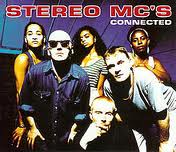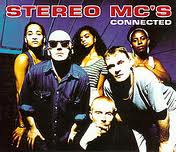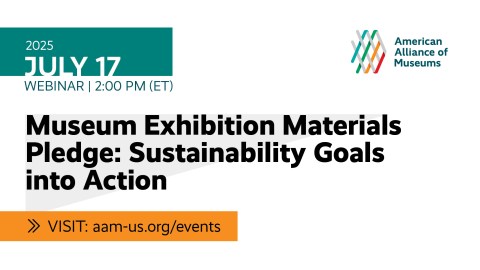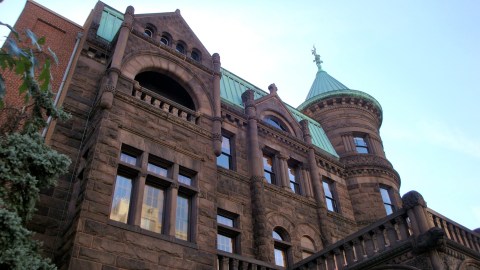
One of my recent music discoveries is Stereo MCs—an English hip/hop electronica dance group which didn’t even form until I was three years out of college and well past the usual age at which one imprints on music.
Stereo MCs might seem an unlikely favorite for a white Boomer raised on Joan Baez and Judy Collins. How did I stumble across them? Via Pandora—a product of the Music Genome Project that suggests music similar to my favorite artist or artists and uses my feedback to refine the mathematical algorithm that identifies potential new favorites.
Now there is a similar service for visual culture—the Art Genome Project, which delivers its content through Art.sy. There was a long article in the NYTimes about Art.sy this past Monday. Reactions from interviewees from the museum world were mixed. Seb Chan from the Cooper-Hewitt compared using Art.sy to browsing through museum galleries, calling it “another way of creating serendipitous connections.” Robert Storr, dean of the Yale University School of Art, noted disapprovingly that the site is “littered with really terrible art that nobody should be directed to.”
Personally, I like this experiment. If it is even a fraction as popular as Pandora (which says it has 80 million registered users) Art.sy would be a boon to visual literacy. It encourages eclectic exploration—I like the fact that, unlike a catalog or coffee table art book, it can ping-pong me back and forth between artists and genres, or let me try to navigate towards some focus.
To scoffers who dismiss the quality of the content, I quote the art history professor who commented on the Walker Art Center’s recent First International Cat Video Festival. When asked whether cat videos were a worthy topic for a prestigious museum, she said “Yes. This is a way to get people talking about material culture. That’s what art historians do.” That feels right to me. Just as I puzzle over how many steps, and what logic, got me from Judy Collins to Stereo MCs (I suspect Greg Brown and Richard Thompson were intermediaries), I look forward to trying to deduce why Art.sy thinks a given work is “like” an Anselm Kiefer painting or a Joseph Cornell box. And if I think some of what they direct me too is dreadful, that will encourage me to reflect, for a moment, on what went into that judgment. The Art Genome project has potential to help users (such as me) who have a sloppy and untrained love of art explore in ways that feel intuitive and accessible.
But what really excites me about the Art Genome Project is something it hasn’t done—yet. I envision a mashup between Art.sy and the Internet of Things, a not-too-distant future in which I’m walking around a new city and my portable hand-held internet-connected device (let’s call it a “phone” for convenience’s sake) buzzes with the message: “Elizabeth, there is an Anselm Kiefer painting you haven’t seen, yet, on exhibit in the X Museum, just a ½ mile from here. [click for directions.] The Museum is open until 8 p.m. tonight and you can get in free with your Alliance membership. While you are at the museum, you might also like these other works….” I am totally ready for that to happen—please invite me to beta test the service.
Projecting out a little further, I imagine a future in which I don’t even have to hit the “like” button to log my art preferences. We are developing increasingly sophisticated wearable monitors for basic measures of health; we’re pushing the boundaries of integrating technology into the clothing we wear or even into stretchable artificial skin; and we’ve started to play with measuring and tracking how people respond, physiologically, to museum exhibitions. Integrate and improve these technologies, and I will be able to authorize my personal biomonitoring net, synched with images collected through my smart glasses, to log which works of art I respond to most strongly. That would let me remain immersed in the experience of the exhibition, without having to fiddle with devices unless I want to. And, going over the data later, I might be surprised at some of my unconscious responses.
We are rapidly developing the ability to generate and mine a sea of personal data, limited only by our concerns about privacy. Maybe we will use this ability to create virtual tutors that follow us through life, helping us deepen and expand our appreciation of art, music and the natural world.
This is just the beginning of my exploring Art.sy and thinking about what it may signal for the future. I’m sharing my embryonic thoughts in the hope it will start some interesting conversations. If you want to continue this discussion, use the comment section below or email me. I’d love to hear what futures this new service suggests to you.










I’ve been interested in and playing with Art.sy for a few weeks. Overall, it is a well-developed site, fairly intuitive, and streamlined. Underneath the surface, however, I am somewhat skeptical…
There are clearly two different goals at work here. The first appears to be education, as the site clearly states in multiple different places that its goal is to “educate users about art. For example, in addition to our artist profiles and gene definitions, we plan to include short texts explaining the significance of specific artworks. Also, we will continue making Art.sy Films, and plan to establish a significant place for video on the site.” This seems innocent enough, and is something that can easily be interpreted as a goal for the site overall.
Then, the second motivation becomes apparent. The main advisors for the project include Larry Gagosian, owner of Gagosian Galleries; Marc Glimcher, president of The Pace Gallery; Joe Kennedy, CEO of Pandora; Barrett White, SVP Christie's; Cristin Tierney, Cristin Tierney Gallery; David Cleveland, author History of American Tonalism; and Sue Hostetler, Editor in Chief of ABMB Magazine. The main investors include Dasha Zhukova, founder of Moscow's Garage Center for Contemporary Culture; Wendi Murdoch, film producer; Peter Thiel, founder of Paypal, board of Facebook; Josh Kushner, managing partner of Thrive Capital; and Jack Dorsey, creator of Twitter. This explains how the website can be slick and not clunky as most of these types of startups generally are until the figure the system out – there’s a lot at stake here. One doesn’t seem shocked that the “techies” are involved – there is a financial gain and cache to being involved in the site. The sore thumb, however, is Larry Gagosian. Now, Gagosian is not Charles Saatchi, but that should still be a red flag… And, here’s where the ball drops.
Many of the works on the platform are available for sale. This, at least to me, is where the “educational ethos” falls flat. Foremost, there is no initial fee(s) to inquire about a piece, stated: “in line with our goal to make all the world’s fine art accessible to anyone with an internet connection, there is no cost associated with making an inquiry or consulting with our team of specialists. If you find a work that you’re interested in collecting, an Art.sy specialist will connect you with our gallery partner free of charge.” Additionally, one can join the Art.sy Collector Program, which is also complimentary, and receive invitations to events and access to a specialist seven days a week.
[more in next comment]
[continuation from previous comment]
Where is the catch, you ask? Well, artists can only be incorporated into the project through a gallery; the gallery must be vetted by the site. Therefore, is there not an inherent curatorial statement to the pieces that have been “approved” for inclusion? An artist cannot self-list, their gallery must be vetted. Does this not, therefore, create a somewhat capitalistic landscape for the platform? One is which only those that are in control of the platform continue to self-perpetuate the artists they are continuing to promote?
Also, and here’s where it may get dicey in the future, “Art.sy’s gallery partners provide Art.sy with information on their artists and images of their artworks, creating one of the largest selections of available modern and contemporary art anywhere on the web. When a user is interested in purchasing a work, their Art.sy specialist will introduce them to the appropriate person at the gallery. Galleries pay Art.sy a commission (on average, 3% of the sale price) on works that are sold as a result of an Art.sy introduction.” So, a 3% cut is taken by the site if an introduction that leads to a sale is made. Why is this a problem? As the site moves forward, this may shut out some galleries that are unable to forfeit that percentage.
If the goal is to “create one of the largest selections of available modern and contemporary art anywhere on the web,” are the little guys going to be included? What about allowing artists to self-list? Until these types of inclusions are made, are recommendations really being made based off one’s interests in art, or are certain artists continuing to be perpetuated and pushed by a selected few? May sound a big conspiracy-theory-ish but, this seems like an extremely controlled platform. I could be wrong, and it could evolve into something amazing. For now, I will continue exploring, but I don’t expect my skepticism to fade anytime soon…
Thanks for weighing in, Kate. Regarding the commission that Art.sy collects on sales–I am all for finding stable financial models for supporting online services that help make museum collections accessible to the public. Heaven knows museums themselves are struggling to find a sustainable business model for maintaining their digital images online. From my reading of the Art.sy website, they are transparent about this business plan–so I don't think there is any nefarious attempt to fool people into thinking they are a purely educational endeavor. It is a commercial site that happens to be a good educational resource–just like real commercial galleries (which I treat like museum exhibits. They are often very well curated.)
And as to filtering, don't museums do that, too? The "little guy" artists can't necessarily get their work into a museum, either. There are some noncommercial sites that give artists a platform to share their work–see, for example, The Open Museum http://www.openmuseum.org/. I'd be interested to have folks compare that nonprofit site, funded by donations (and run largely as a labor of love, I believe) to Art.sy. What are the differences in usability, scope, reach?
Might be time to pick up Sarah Thornton's Seven Days In The Art World (http://amzn.to/UNlUGV)
The artist, the art market and the art museum have far more porous boundaries than most of us in museums like to imagine.
That Art.sy brings these to the surface is not such a bad thing. In fact, I'd much rather be able to have a macro view of art that is in museums and art that is likely to eventually end up in a museum, than just the former.
I'd expect that direct artist relations would happen down the track, but then you have to deal with the mess that was Saatchi's MySpace for Artists style site (that seems to have been decommissioned).
Have you seen this?
http://www.fastcompany.com/3002081/oyster-spotify-books
Kate–the link Kay Bee just posted was to a Fast Company article about Oyster–a mobile app that enables users to find and read content from a variety of sources. They are focusing on the Pandora/Art.sy-like aspect of using an algorithm to recommend new books. Their business model is fee-based: do you feel more comfortable with their straight fee-for service approach, rather than free access underwritten by potential sales?
Hey Kate, I’m interested in unpacking your argument a little. What do you think would happen to Art.sy’s educational aspirations if all artists, all the “little guys”, were able to access Art.sy? Not all art that has ever been made, nor even art that was considered valuable and important at the time, is necessarily recorded in the history books. Education and markets have always fed into one another. Artists have always become incorporated into the canon by being written about, exhibited, bought, sold, debated, discussed, compared to one another, and so on; and it's the canon that informs art education. The two are necessarily linked. So to that end, it actually makes a lot of sense that an artist cannot self-select to be on the site. Not only would it be very labour intensive (see this interview I did with Matthew Israel about The Art Genome Project http://museumgeek.wordpress.com/2012/09/21/interview-matthew-israel-on-the-art-genome-project/), but the site could actually become less useful for education purposes, because it would be filled with artists whose actual or potential influence in the art world is minimal. The formation of the canon relies on discrimination between works that are and will be important (for whatever reason). The inclusion of so much additional noise as might occur if any artist, with or without representation could self-select to be on the site, would not necessarily be beneficial for anyone. You sound skeptical that the site is using a form of curatorial judgement, but isn't it precisely that sort of vetting, about who is 'in' or 'out' the very thing that drives the value of the art world? Certain artists will always be more valuable than others; and those artists are also the ones we are more likely to learn about in art school. Why? Because they capture the imagination, or seem to be filled with potential and promise terrific ROI (whether financial, or other less obviously transactional forms of investment). It might seem unfair that some artists ‘make it’ whilst others do not, but that’s the game, surely?
Elizabeth, I love your visions for the future of Art.sy, like the mashup with the Internet of Things. I, too, can imagine future uses for the service, like using my “portable hand-held internet-connected device” to scan my living room for different colours and shapes and then recommending particular works of art that might match the decor and available space in my home. Or in which an art collector could import and store images of their own private collections to the site, so that Art.sy’s recommendation engines could find and match new works that come into the collection based on their existing collection, in order to recommend artists and works that might suit. Obviously serious private collectors would have their own internal contacts in the art world so as not to need a service like this, but maybe it could be useful for newer collectors to the market. Lots of new ideas to imagine here, particularly since the Art.sy crew have lots of creative tech people on hand to help find great technical solutions to the different problems that present themselves.
On Elizabeth’s first comment:
I’m not inherently saying it is wrong to be taking money through the platform for users who utilize the concierge services; I am saying I am skeptical overall about the platform itself. The inherent shell of Art.sy is very interesting to me, I just feel that if there are biases going into the work that is selected to be included, these may not be readily apparent, which could be a bad thing in the long run. If we all take off our museum hat for a minute, and think about an average user, this is where my skepticism seeps in; does s/he read through the entire “Learn More” section? Is it readily apparent which work is included within the platform, where these works have come from, and that some/many are for sale, or would an average user take what’s here at face value, and not gain the knowledge of the platform’s double goals? That’s my ultimate concern. Could the same biases be at work elsewhere, say in museum galleries or for-profit galleries? Sure. But, there is a different interaction here, online, than in the physical presence of the space and the artwork.
On Sebastian Chan’s comment:
I am completely aware of the interactions between the artist, the art market, and the art museum.
What my cautions are with Art.sy
is what you are starting to get at in the third part of your comment – “That Art.sy brings these to the surface in not such a bad thing” – do they actually bring it to the surface? Do they have a posted list of participating collections, galleries, and museums? Does their mission state that they are in the business, ultimately, of selling art – of connecting collectors to potential new works for sale [“Art.sy’s mission is to make all the world’s art freely accessible to anyone with an Internet connection. We believe that by bringing together art and science, Art.sy will foster new generations of art lovers, scholars, collectors, and patrons. Thank you for joining us in this ambitious mission.”]?
I’m not slam dunking Art.sy, I’m proceeding with caution. I am skeptical that the underlying criteria and motivations for creating the algorithm may be swayed by ulterior motives. I’m not saying it ultimately is a bad platform, or a bad concept – I am questioning its motivations now, to see what it really is resting on, and how it really is structured, before I herald its positives.
On museumgeek’s comment:
Inherently, I’m not skeptical about the curatorial act, the act of culling through works for a project like this, nor am I advocating only for including “the little guy.” What I am ultimately skeptical about is the groundwork of what is here – does it really showcase all of art history, or is there a biased view of art history at play here, one in which many who may not know better will blindly believe it to be everything?
I’m thinking about the average user, who may or may not have any background in art or art history – are they going to think this is something different than what it is – are they going to have any skepticism, or are they going to accept it as a showcase of all art, not one in which certain individuals shaped what is included? There’s something different about encountering art online – more people have the option to do so, the Art.sy site is clean and well-designed, the images are of a good quality. This may make an average user think the site is more neutral than it inherently may be. And, what’s entered into the Genome is selected by the same individuals; as it generates what you might like, it is pulling from a series of works chosen by a select few – is that an issue?
Kate–all the elements you name (certain individuals shape what is included; what’s entered into the Genome is selected by the same individuals; it is pulling from a series of works chosen by a select few) is true of museums, too, only there the selection is by curators motivated by professional advancement, peer recognition, approval of their work (by public, peers, employers) compensation, etc, in addition to love of art. People selecting work for Art.sy have different peers and different economic motivators, but I bet they share the love of art.
As to transparency, I suspect the public doesn't realize what goes into shaping a museum collection or an exhibit–history of the museum & its collections, who happened to donate what, and when; what is popular or edgy in academia at the moment; what the museum thinks will draw the right audience.
I think there is a tendency for people who work in the nonprofit sector to cast aspersions the motivations of people doing parallel work in the for-profit section. Does this arise from a need to feel that we have sacrificed potential income in return for greater credibility?
I am skeptical, ultimately, by something of this nature created by anyone – I would equally be skeptical if it only included works from the nonprofit side, with museum curators or others selecting the works. I’m skeptical of Pandora — there have been conversations that there are similar underlying motivations there, and that similar to radio airtime, there is “pay to play” going on through Pandora, especially with un-established acts. I haven’t done a lot of research on this, it is merely something I’ve heard from a few people in the music field that I’ve talked to. I’m not saying that it is wrong for money to be involved, or that money should not be involved – I am saying I am skeptical.
I am treading cautiously and seeing how the platform develops. Currently, it is showcasing work based on the work that is currently available. I am curious how it will unfold, and who will/will not be included in the mix. Ultimately, it will expose art to more people – but what experience will it ultimately give them? Will it be a well-rounded mix, or will it be one routed in the opinions and feelings of a select few? This question could also be asked of museums – they too, are routed in the opinions and feelings of a select few.
The difference I see is whether the user is aware of whom is behind either thing – ultimately, walking into an institution, there is some acknowledgment of location, that you are in X museum, and X museum’s staff created the exhibitions you are viewing (or, another X institution if the exhibit is on loan…but you get what I mean). When you encounter art online, in a space like Art.sy, as a user, do you make the same acknowledgment?
I’m not “anti-Art.sy” by any means – it is interesting. Could it be used to establish un-established artists? Sure. Could it expose many to works they would not have seen otherwise? Of course. I’m just treading lightly, and keeping my eyes open as the platform and Genome evolve. I don’t think that’s a bad thing, for-profit, nonprofit, in-person, online, or otherwise.
@Kate: "does it really showcase all of art history, or is there a biased view of art history at play here, one in which many who may not know better will blindly believe it to be everything?"
Two provocations and a question in response.
1) There is no such thing as "all of art history."
2) All views of art history are biased.
3) Does it matter if someone who "may not know better" blindly believes it to be everything?